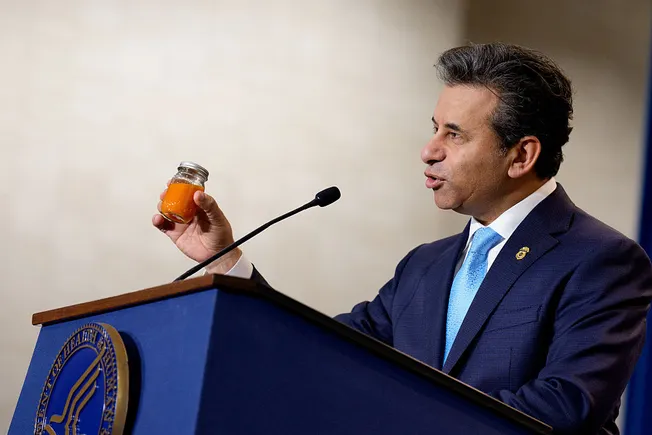The U.S. Food and Drug Administration recently approved three new color additives made from natural sources, providing the food industry with alternative options to artificial dyes. This decision comes as a response to increased regulatory pressure and the push for healthier food options.
Two blue colors were granted petitions for approval, one made from algae-based galdieria extract and another from butterfly pea flower. Additionally, calcium phosphate, a white color used in sugar for coated candies, was also approved. These natural colors offer a safer alternative to petroleum-based artificial dyes, which have been linked to health risks.
The FDA, along with Health and Human Services Secretary Robert F. Kennedy Jr., has urged the food industry to voluntarily phase out synthetic dyes by the end of 2026. This initiative is part of the “Make America Healthy Again” campaign, which aims to reduce the consumption of ultraprocessed foods and harmful ingredients.
Critics of artificial food dyes point to their potential contribution to behavioral issues in children and increased cancer risks. While the FDA is not banning artificial dyes outright, several states are considering prohibitions as the demand for natural colors grows.
Transitioning from artificial dyes to natural sources poses challenges for the food industry. Product reformulation is a complex process that requires time to adjust supply chains and ensure quality control. The International Association of Color Manufacturers highlights the need for agricultural resources to support the transition to natural colors.
Despite these challenges, major food manufacturers like PepsiCo and Tyson have committed to accelerating the shift to natural dyes in response to FDA pressure. McCormick, a leading ingredient and flavorings company, has also observed an increase in reformulation efforts among restaurants and food manufacturers.
The FDA’s approval allows for the use of galdieria extract blue in nonalcoholic beverages, cereal, and a variety of desserts and candies. Butterfly pea flower extract, already approved for yogurt and beverages, can now be used in ready-to-eat cereals, crackers, and snacks. This decision marks a significant step towards a healthier and more natural food supply chain.


